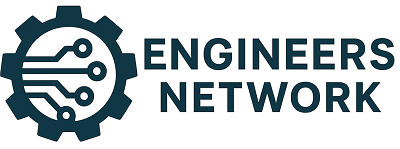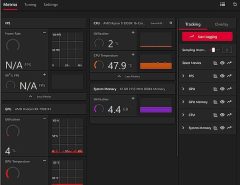Technical writing is a specialized type used to communicate complex information related to technology, science, and other technical fields. It involves creating instruction manuals, how-to guides, technical reports, white papers, API documentation, and other documents that explain technical concepts, products, or services to a targeted audience clearly and concisely. In the fast-paced information technology (IT) world, accurate and understandable technical documentation is essential. IT professionals rely on technical writers to create the user guides, troubleshooting manuals, release notes, and other documentation they need to do their jobs effectively. Technical writers bridge the communication gap between complex technological systems and those using them.
Characteristics of Technical Writing
Technical writing has several defining characteristics that set it apart from other forms of writing:
Purpose – The primary purpose is to convey information about how to do something or how something works. The writing must be accurate, complete, and easy to understand and follow.
Audience – The audience consists of technical readers with some background knowledge of the subject matter. The writing is tailored to their level of understanding.
Style – The writing style emphasizes clarity, conciseness, and precision. Sentences are short and direct. Unnecessary words are eliminated.
Organization – Ideas are presented logically, such as chronologically or moving from overview to specifics. Headings, lists, and visual elements like tables and graphs help organize complex information.
Objectivity – Technical writing focuses on facts and instructions. The writer avoids personal opinions, flowery language, and extraneous details.
Accuracy – All information and instructions must be error-free and vetted for technical correctness. Even small mistakes can lead to confusion and unintended consequences in technical contexts.
Technical Writing in IT Departments
Technical writing is vital in information sharing within IT departments and technology companies. Here are some of the ways technical writers are utilized in IT environments:
Software Documentation
Technical writers produce various documents that accompany enterprise and consumer software products. These include:
- User manuals – Comprehensive guides that instruct end users on all software application features and how to perform different tasks.
- Online help – Embedded help content accessed via dialog boxes, F1 calls, help icons, and search functions within a software program.
- Release notes – Summaries of new features, updates, fixes, known issues, and other changes included in a software release.
- API documentation – Reference guides for application programming interfaces (APIs) that explain available functions, methods, parameters, return values, and code samples.
- Troubleshooting guides – Procedures for diagnosing, isolating, and resolving common technical problems users may encounter.
Hardware Documentation
Technical writers create manuals and guides for various hardware products and components, such as:
- Device manuals – Instructions for setting up and using tablets, laptops, printers, routers, smartphones, and other technology devices.
- Maintenance/repair manuals – Steps for diagnosing issues, replacing parts, and performing repairs on devices.
- Installation guides – Directions for assembling, connecting, and installing hardware such as rack servers, telecom switches, and storage arrays.
- Component specifications – Technical specifications, capabilities, and operational details for hardware components like microprocessors and network cards.
IT Policies and Procedures
Within IT departments, technical writers develop documents like:
- Standard operating procedures (SOPs) – Codified steps for performing routine IT tasks like backups, upgrades, patch installations, and onboarding/offboarding.
- IT policies – Rules that govern the organization’s technology systems and data security practices. For example, acceptable use, access control, and password policies.
- Disaster recovery plans – Plans and procedures for protecting and restoring IT systems and data in an emergency like a cyberattack or natural disaster.
Technical Reports
Technical writers create reports documenting the results of various IT activities:
- Project documentation – Plans, status reports, and post-implementation reviews for IT projects like software development, infrastructure upgrades, and migrations.
- Testing/evaluation reports – Assessments of system functionality, usability, performance benchmarks, and other metrics gathered during QA testing.
- Post-mortems – Analyses of challenges, failures, and lessons learned after major outages, data breaches, or unsuccessful IT initiatives.
- Solution recommendations – Comparisons of technology options and suggested courses of action for addressing business needs and pain points.
Skills Needed for Technical Writing in IT
To be an effective technical writer in the IT industry requires a blend of writing, technical, and communication skills, including:
- Strong writing ability – From organizing complex topics to writing clearly and precisely using proper grammar and word choice.
- Knowledge of technical concepts – An understanding of technical principles to comprehend the subject matter and convey it appropriately.
- Attention to detail – Thoroughness and accuracy are paramount when documenting technical specifications and procedures.
- Information design skills – Ability to transform dense technical information into well-structured, accessible documents using layout, visuals, and other techniques.
- Understanding of audience – Write in a way that considers the reader’s background, skill level, and goals. Avoid using jargon when unnecessary.
- Strong research skills – Diligently investigate products, conduct interviews with SMEs, and verify the accuracy of all technical information included.
- Collaborative ability – Confer with developers, engineers, product managers, and end users to understand requirements and create useful documentation.
- Tools proficiency – Technical writers employ various applications like Snagit, MadCap Flare, XML editors, and DITA CCMS to produce deliverables and publish content.
Best Practices for Technical Writing in IT
Following proven practices for planning, writing, and maintaining technical documentation helps IT technical writers maximize the effectiveness of their work:
- Get input from stakeholders – Connect with the IT team, executives, and users to understand business goals and key priorities to address in the documentation.
- Understand the audience – Write for the appropriate reading level based on the roles and expertise of the target users.
- Organize logically – Structure documents and sections intuitively using titled headings, numbered steps, and visual workflow diagrams.
- Write concisely – Use short, simple sentences in the active voice. Avoid unnecessary words. Include only pertinent details.
- Use visuals – Complement text with labeled diagrams, illustrations, tables, flowcharts and screenshots that clarify complex concepts.
- Write accessibly – Craft content accessible to users with disabilities, following web accessibility guidelines.
- Enable scanning – Facilitate skimming through keyword-rich headings, summaries, and visual callouts for key facts.
- Simplify complex processes – Break down complicated workflows into discrete, sequential steps accompanied by screenshots and examples.
- Provide alternative formats – Produce documentation in both online and downloadable formats for anytime access. Include responsive design for mobile viewing.
- Iterate based on feedback – Improve documentation quality by soliciting user reviews and incorporating suggested changes in subsequent revisions.
- Update frequently – Review and refresh documentation regularly to ensure accuracy and conformance with the latest product updates and platform changes.
Selecting Technologies for Technical Writing in IT
Technical writers utilize a range of applications and technologies for creating, editing, publishing, and maintaining IT documentation:
- Authoring tools – Applications like MadCap Flare, Adobe Framemaker, and Help+Manual enable writers to produce professionally styled and formatted deliverables for print and web.
- CCMS – Component content management systems like oXygen XML Editor and Astoria allow for XML-based authoring, content reuse, multi-channel publishing, and documentation version control.
- DITA – Darwin Information Typing Architecture is an XML-based standard for topic-based authoring and structuring of modular documentation components.
- Snagit – Screen capture utility for documenting workflows and creating visual step-by-step instructions. Integrates with documentation tools.
- Adobe Creative Cloud – Tools like Photoshop, Illustrator, and InDesign assist with image editing, info graphics, page layouts, and PDF publishing.
- MadCap Analyzer – Provides text complexity analysis, topic coverage, content reuse, and terminology to optimize technical writing.
- Git – Distributed version control system enabling documentation teams to collaborate during writing and edit tracking.
- Content delivery platforms – Solutions like Adobe Experience Manager and Drupal facilitate dynamic publishing and content management across channels.
- Lightweight markup languages – Languages like Markdown and reStructuredText help simplify documentation formatting and convert to multiple outputs.
Benefits of Effective Technical Writing in IT
Investing in skilled technical writers and high-quality documentation provides significant benefits for IT organizations:
- Improves user experience: Allows users to fully utilize software and hardware through intuitive, task-based help content and clear instructions.
- Increases productivity: Enables new employees to ramp up faster and existing staff to work more efficiently. Saves time spent troubleshooting.
- Reduces training costs: Lowers the need for formal training via comprehensive self-help documentation.
- Drives adoption: Encourages usage and reduces abandonment of new systems and features.
- Lowers support costs – Decreases help desk call volume by providing 24/7 self-service support resources.
- Enhances accessibility: Expands access to tools and information for users with disabilities through accessible technical writing practices.
- Mitigates risk: Helps organizations avoid regulatory non-compliance, errors, downtime, and other consequences of poor documentation.
- Facilitates agility: Modular documentation components can easily be reused, reconfigured, and output to new formats as needs change.
- Preserves institutional knowledge: Helps retain operational methods and expertise even as staff turns over.
- Provides operational consistency: Standardized documentation ensures IT processes are performed the same way across the organization.
As this overview illustrates, skilled technical writers are indispensable to IT teams looking to improve efficiency, ensure systems and technologies are used to their full potential, and provide an exceptional user experience. When executed effectively, technical writing enhances comprehension, helps avoid errors, and enables information technology professionals to do their best work.
FAQs
Q: What writing formats are commonly used for IT documentation?
A: Technical writers often produce IT documentation in formats like PDF manuals, online webpages, embedded browser help, eLearning modules, quick reference cards, and videos. Structured authoring via XML, DITA, and Markdown is common.
Q: What qualifications are required to be a technical writer in IT?
A: Most IT technical writing roles require a bachelor’s degree in technical communication, English, journalism or a related field. Technical expertise, writing samples, and some IT work experience are preferred. Many technical writers have prior careers in IT.
Q: How is technical writing in software development done?
A: Technical writers collaborate with developers to understand and translate software features into user-friendly documentation. They also develop embedded help systems, release notes, API docs and support materials before, during, and after the development cycle.
Q: What makes technical writing different from other forms of writing?
A: Technical writing focuses on accurately and clearly imparting factual information and instructions to a technical audience. It differs from other forms in its purpose, style, organization, precision, and intensive research required on technical subject matter.
Q: How can technical writers demonstrate ROI?
A: Metrics like reduced training and support costs, faster onboarding, increased user productivity, lower documentation maintenance costs, and increased software adoption rates help demonstrate the ROI of dedicated technical writing resources.
In summary,
Technical writing plays a vital role in IT departments and technology companies by bridging the gap between complex systems and those using them. IT technical writers require a specialized blend of writing expertise and technical knowledge. Embracing a career as a Cloud Engineer not only opens doors to dynamic opportunities in the ever-evolving tech landscape but also underscores the importance of following best practices for creating high-quality, user-friendly documentation—a key element that significantly benefits business operations and end users within technical organizations.
Tags: coding language, digital communication, information tech, it documentation, it exploration, it insights, it writing, tech communication, technical content, writing styles







Leave a Reply